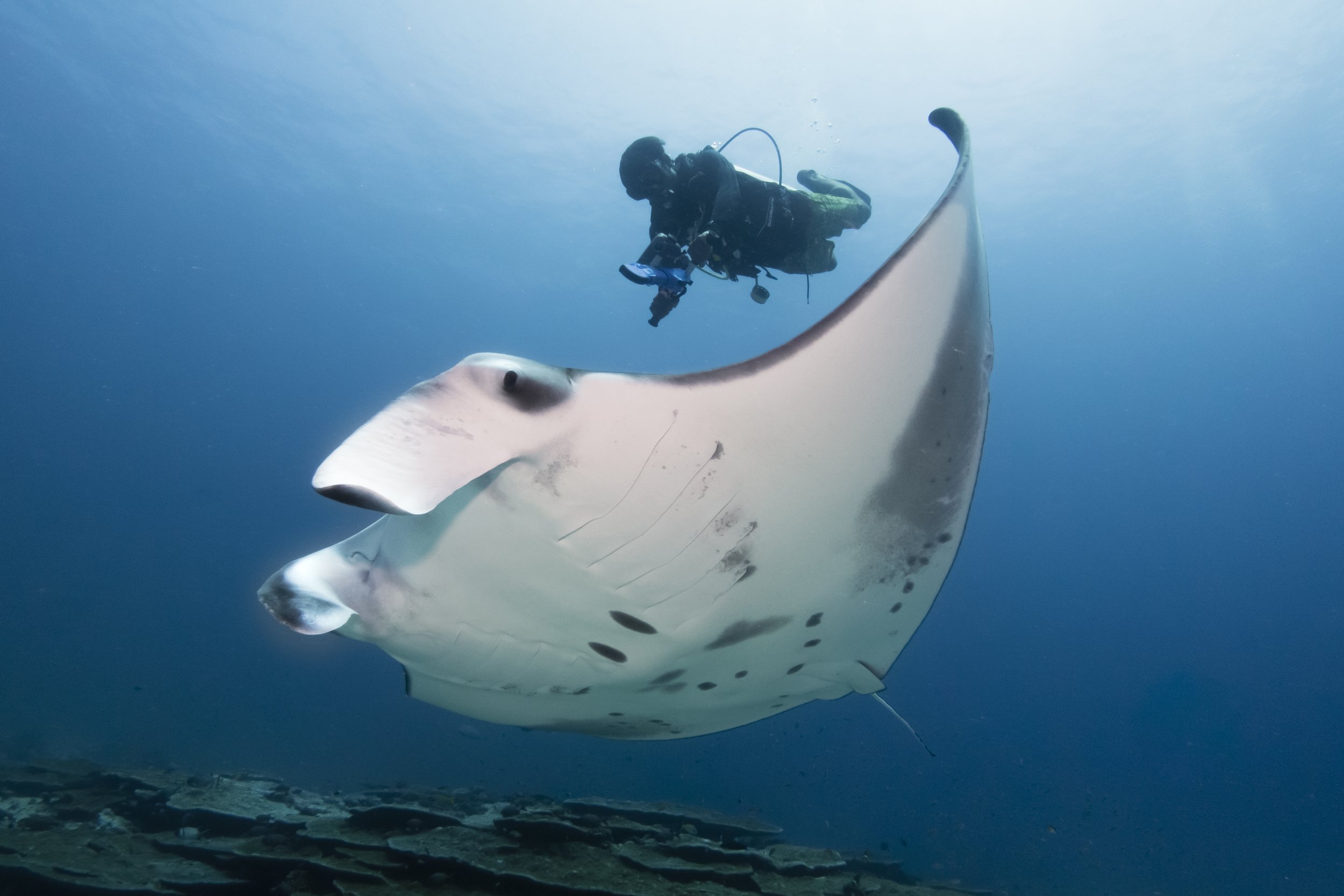

PHOTOGRAPHIC IDENTIFICATION
Manta rays have a unique spot pattern on their ventral surface (belly), which can be used to identify them. By taking photographs of these spots, and profiling individuals, the team can track manta ray population numbers, movements, physical changes and more!
CONTACTLESS UNDERWATER ULTRASOUND
The MMCP team in collaboration with partners, developed the world’s first contactless underwater ultrasound scanner that allows researchers to see if a female manta ray is pregnant, and to study the development of the foetus, in a non-invasive way.
STEREO-VIDEO-PHOTOGRAMMETRY
Our teams have been using a device called a Stereo-Video-Photogrammetry system, two go-pro cameras calibrated to take accurate wingspan measurements of manta rays. By taking repeated measurements of manta rays, the MMCP can understand their size at maturity and growth rates.
REMOTE UNDERWATER PHOTOGRAPHY
The MMCP wants to know if manta rays use reef habitats differently when divers/snorkelers are present and to deepen their understanding of how temporal scales affect manta ray activity. Underwater time-lapse gopro cameras give them new insight into manta ray behaviour and habitat use so that they can provide vital scientific guidance to the Maldives communities, businesses and government; helping them to protect the local manta ray population on which their economy depends.
PLANKTON SAMPLING
Manta rays feed on microscopic zooplankton. The MMCP is investigating the zooplankton species diversity and abundance in key manta ray aggregation areas, to better understand the diet of manta rays and determine which species they have a preference for and in what numbers. They are also monitoring the zooplankton to help understand the possible impacts of the climate crisis on a warming ocean, which is likely reducing the abundance of the manta ray's food.
ENVIRONMENTAL PROFILING
Through monitoring the physical oceanographic conditions in manta ray habitats, the MMCP is gaining insight into the varying environmental conditions and physical properties that are driving manta ray behaviour and influencing zooplankton availability.
LOCAL ECOLOGICAL KNOWLEDGE SURVEYS
By conducting semi-structured interviews with fishers and community members of the atolls the MMCP research in, they are aiming to determine the communities' understanding of manta rays, awareness of and attitude towards conservation regulations, and determine if any anthropogenic pressures are threatening such species to identify how management can aid their conservation. The collaboration of knowledge between local communities, scientists, and management projects has the potential to bridge gaps in baseline data, to develop a broader understanding of manta rays and improve relations and community support for the conservation of a valuable and vulnerable species.
ENDOCRINOLOGY
The MMCP is non-invasively collecting manta mucus to assess hormone concentrations to identify their roles in sexual maturity and reproduction. They will use the findings to help pinpoint when reef manta rays reach sexual maturity and when their breeding seasons occur so that they can suggest ways of improving their population viability.
ANIMAL TELEMETRY
Due to the vast horizontal and vertical distances that manta and devil rays cover, tracking these species through photo identification alone has its limitations. The use of telemetry has provided important insight into the movement and behavioural ecology of manta and devil rays for the MMCP, which has been used to aid effective conservation strategies in the Maldives.
GENETICS
DNA provides a unique window into the past, present and future of a species. The MMCP can use it to understand the evolutionary history of manta and devil rays, and characterize patterns of population structure through genetic sequencing.
ACOUSTIC RESEARCH
This research project aims to investigate both natural and anthropogenic influences on manta ray cleaning stations in the Laamu, Baa, and Raa Atolls. It integrates three interconnected components: acoustic soundscape exploration, sustainable tourism practices, and the assessment of human sound pollution. By exploring the previously uncharted soundscapes of these ecologically significant ecosystems, we aim to better understand the drivers and limiters of ecosystem health, ultimately informing and improving conservation strategies for cleaning stations.











